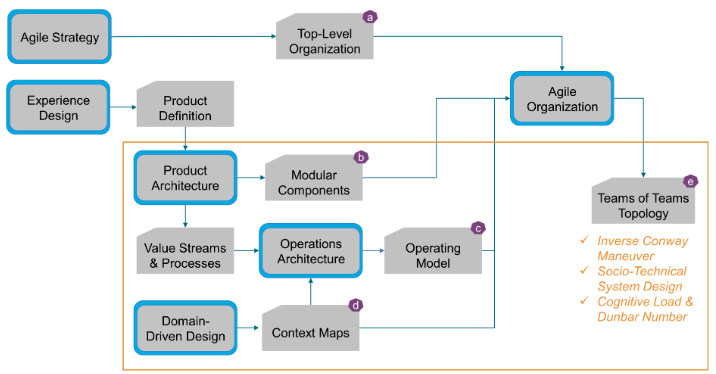Unit 6 – Open Agile Architecture Building Blocks
Open Agile Architecture Practitioner Certification


6.1 Describe the O-AA Development Building Blocks
-
Strategy
Developing a sustainable difference by positioning oneself strategically. Performing different activities as rivals, or similar activities in different ways. -
Corporate Brand Identity, Culture
Corporate Brand Identity starts from the company's mission and vision. Must be consistent with the culture and capabilities of the org. -
Value
Provide benefits at the lowest possible cost. -
Perspectives
Experience - Defines the value from a customer perspective
Work System - Defines the ability of the enterprise to deliver value efficiently, Analyzing commonalities across value streams.
Technical System - Software and hardware parts of the enterprise. -
What the Enterprise “Is”
Defining boundaries, covering:
1. Product Architecture
2. Operations Architecture
3. Organization
4. Domain-Driven Design
Complex Adaptive System (CAS) - intricate hierarchical arrangements of boundaries and signals -
What the Enterprise “Does”
Experience Design - customer research and product discovery
Journey Maps - Define which activities deliver the experience that customers expect
Value Streams - All the activities required to bring a product from concept to launch
Event Storming - Helps Agile teams explore the domain. Facilitate a strcutured conversation about the domain.
6.2 Explain Building Blocks Logic
Jeff Bezos mandating microservices, whcih included concurrent changes to the technical and social systems of the company.
The building blocks do not represent layers, they are views that translate into concerns.
- Experience
- Product
- Operations
- Software and Hardware
- Organization (fitted to the systems above)
These systems should be developed concurrently.
6.3 Describe Enterprise Decomposition
This is a key arhitectural decision. Hierarchy is a central structural scheme, but usually a system is more complex than a traditional organizational hierarchy. The enterprise can be decomposed into components that are minimally interdependent. The few dependencies that result are standardized and managed.
6.4 Describe Segmentation Approach
Building blocks are linked to other building blocks and work products. These pieces all influence each other, which eventually leads to a "Team of Teams" topology.

6.5 Explain Set-Based Concurrent Engineering (SBCE)
SBCE delays architecture decision until the last responsible moment because incompatibilities in architecture decisions are discovered too late in waterfall AND iterative processes. It keeps the solution space open by letting multiple concepts be created until one wins out.